Featured
Jallikattu: Personal narratives of young bull keepers
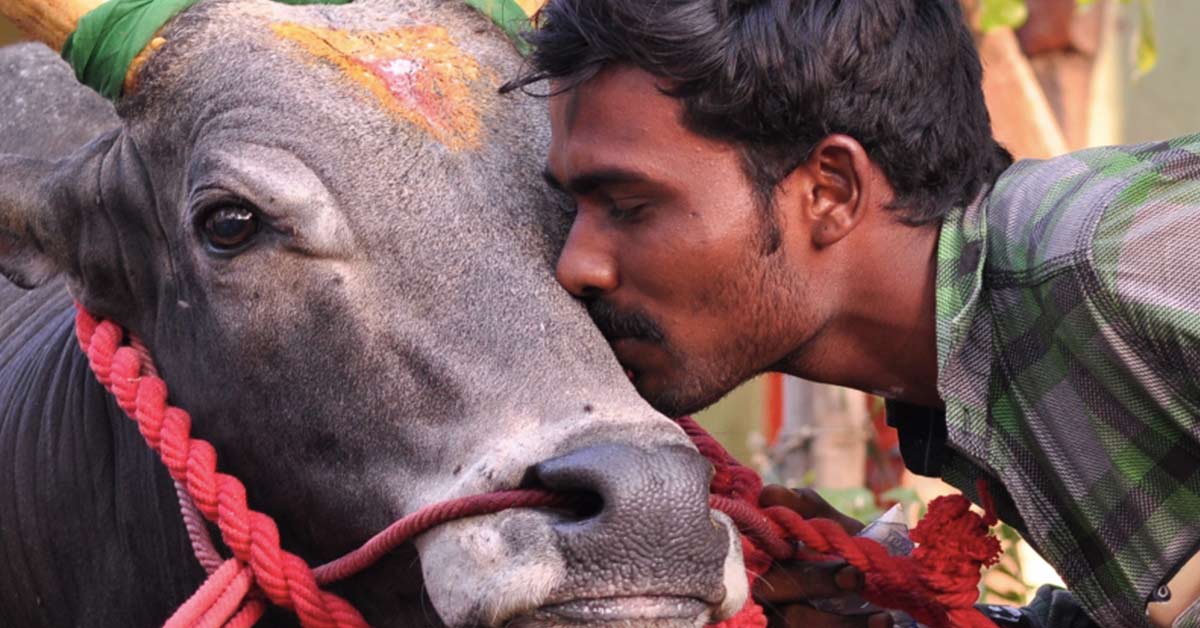
The following article is part of Saha Sutra on www.sahapedia.org, an open online resource on the arts, cultures and heritage of India.
The following text is based on an interview with Rahul by Vasudev R. and Vivek R. at Vadipatti, in the Madurai district of Tamil Nadu, in December 2017.[i]
It provides a first-hand account of a group of young men, belonging to different caste groups, who came together in order to create and sustain a public activity and a public space that they believe can go a long way in bridging caste-based divisions and discrimination.
Rahul is a 24-year-old computer engineering graduate from Vadipatti, Madurai district, Tamil Nadu. He previously worked in the information technology (IT) sector in Chennai for a year; however, unable to cope with night shifts and the pressures of life in a metropolitan city, he decided to return to his village and take up farming. Rahul lives with his mother who is a government school teacher, his younger sister who is studying architecture, and his brother who is a police officer. His father passed away 15 years ago.
While the family (belonging to the Naidu caste, an intermediary caste group) owns 24 acres of land, only 13 acres are used for cultivation, owing to water scarcity in the region. According to Rahul, his family had given up farming even though agriculture had been their traditional occupation due to rising costs and increasing water scarcity. Despite owning agricultural land, no one in his huge extended family was willing to take up farming as they believe that it does not offer good returns and prefer to seek out high-paying jobs in cities and foreign countries. However, Rahul feels that if he does not keep up the tradition, the practice of agriculture will be lost to his generation. He feels a sense of pride in being one of the first of his generation in Vadipatti to take up farming. He is critical of those who want their children to have high-paying jobs and settle in foreign countries. At present, six acres of his land are used to cultivate jasmine, three acres to grow coconut trees, and one acre for farming eggplant and lady’s finger. He is also trying to cultivate corn on three acres of land. Rahul hopes to grow crops without the aid of chemical fertilisers to ensure the health of future generations.
Apart from agriculture, the family also earns a good profit from dairy farming and animal husbandry. They have seven or eight cows, and they sell fresh cow milk to relatives and other villagers. They also rear a few ducks and goats. The dung from the livestock is utilised as manure in the fields. According to Rahul, rearing animals is advantageous in this region as animals require less water and space than crops. If one has access to ample water, increasing agricultural production is easy; but since water is in short supply on his farm, the income from animal husbandry is vital for the household. Rahul says that he cannot imagine subsisting on agriculture alone.
Also read: Dahi Handi: The balancing act of Sports, Religion and Politics
For Rahul and his family, the cattle are like their own flesh and blood. Rahul sees them as his ancestors who have been reborn as animals, and takes great joy in interacting with them.
Rahul also raises six Jallikattu bulls. Rahul and his friends purchased their first bull, of the Umbalachery breed, from Jayankondam in the Ariyalur district in 2010 using savings from chit funds. At the time of buying the bull, his family had been unaware of his interest in practising Jallikattu, and for the first two years, they took care of the animal without informing their families of their plans. Rahul’s primary motivation for taking up this sport was his belief that through Jallikattu, the entire village would unite against caste-based discrimination. Prior to their Jallikattu project, he and his friends had tried to address the issue by organising volleyball matches. However, this did not go according to plan since it did not bring the people of Vadipatti together as expected. According to Rahul, the purchase and upkeep of the bull is what brought his friends from different castes together and united them under the banner of G.P. Guys (see Fig. 1). It has been eight years since the formation of G.P. Guys, and not once have the members fought amongst themselves since the formation.
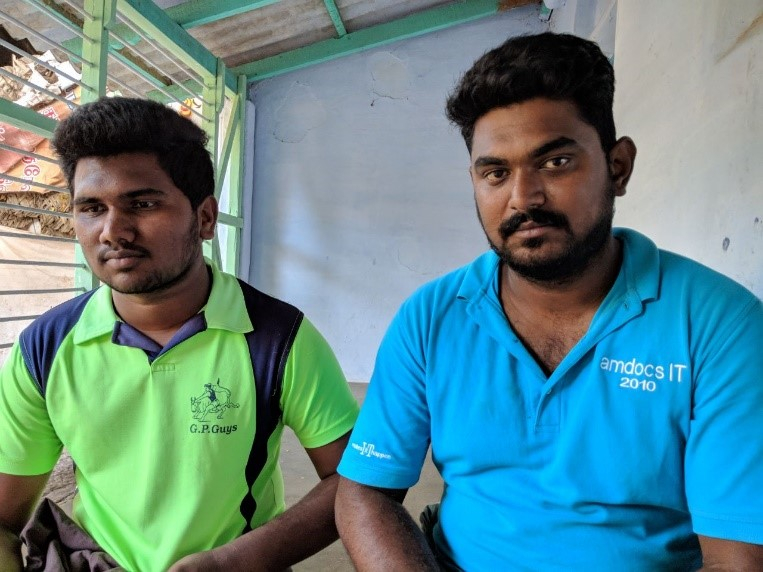
Rahul learnt how to rear Jallikattu bulls from his friend’s grandfather and by interacting with others involved in the sport. Today, Rahul feels he is knowledgeable enough to identify the best bulls on the market. He first examines the bull’s teeth to ensure that it is a healthy number. The more teeth a bull has, the higher its price. He then looks at the curve of the animal’s horns. A Jallikattu bull must have short legs and a short tail. A bull with facial marks is considered unlucky. The best way to judge the pedigree of a bull is to observe its behaviour at Jallikattu festivals, as different bulls can have different personalities. For example, the distinguishing trait of the Umbalachery breed is the ease with which bonding with the animal occurs. In addition, bull keepers across Tamil Nadu practise different rearing practices. For example, in the Trichy district, bull keepers interact with Umbalachery bulls frequently by rubbing them. In Madurai, in contrast, bulls are generally tied and kept in their shed.
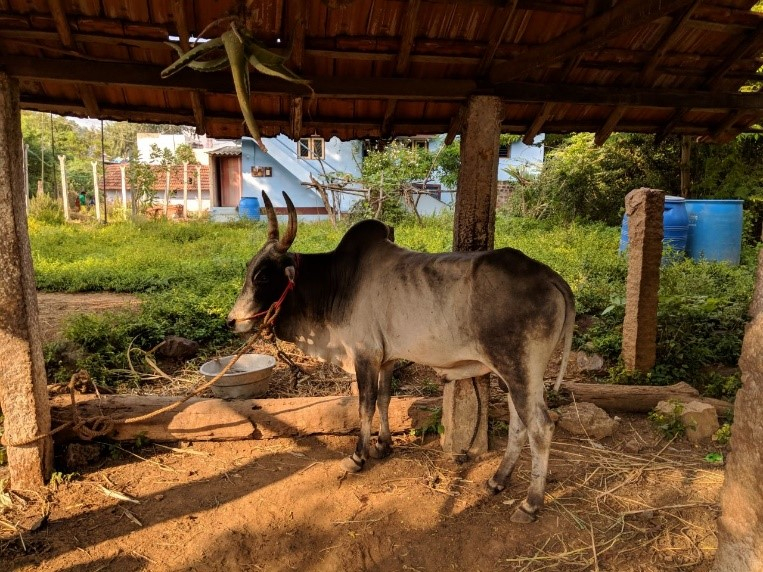
The remaining five bulls were bought over the last couple of years. According to Rahul, whenever they purchase a new bull, it is immediately seen as an intimate member of the family, and sometimes even as God. Since the Jallikattu festival begins in January and continues until May or June, he begins preparing his bulls from November onward by increasing their food intake. The bulls are fed pulses, green gram, dates, dried fruits, corn, seeds, wheat husk, and a coconut mixture. During this period, he spends around ₹50 per day on each bull. What he gets in return is high-quality fertilizer, as well as a sense of pride in doing his part to preserve the local culture. He also trains his bulls during weekends in a makeshift arena he has built on his farm. During these practice sessions, the bull is made to compete against his friends and other young boys eager to learn how to master the animal. This helps to not only train the bull, but also to prepare those who wish to become bull tamers. Rahul also takes the bulls to a nearby pond, where they are made to swim as a form of exercise. He usually does this once a week, but when water is scarce, he takes the bulls to another village once a month.
Rahul has been participating in Jallikattu competitions since 2010 as a bull keeper (i.e., unlike bull tamers, he does not enter the arena to attempt to capture a bull). Before the festival commences, the bull is taken to the nearby temple and offered a veshti (dhoti) and a lemon as a form of worship. Similarly, when the bull is brought back home after a game, it is worshipped for winning and bringing the boys back home safely. Before and after every event, these rituals are repeated. Rahul states that the first bull they bought is a source of pride for them (Fig. 2). It has become like an insignia for his family, for G.P. Guys, and for Vadipatti. There is no monetary gain to be made from participating in Jallikattu events, Rahul points out; the sole reward is the satisfaction one gains from participating in the preservation of Tamil traditions and culture. He explains that during times of financial crisis he and his friends borrow from each other, but the bulls have never been affected in any way. Even if the men go hungry, they will not let the bulls sleep unfed. When Jallikattu was banned, they somehow managed to keep and take care of the bulls.
Also read: Photostory: Taleems of Kolhapur — A legacy in wrestling
For Rahul and his friends, practising Jallikattu is about more than merely participating in a festival. It is about bringing together a village that was once divided along the lines of caste. Social equality has become a reality in Vadipatti because of Jallikattu, with villagers across castes interacting with each other in and around the arena, sharing food, etc. Rahul quotes an example of a boy from the Vannan (dhobi) caste, who now freely enters Rahul’s home, sleeps in his bed, eats the same food that he eats, and so on. While many attempts had been made in the past to abolish the caste system in the village, it is mainly through Jallikattu that this has become possible. Rahul also believes that apprenticeships in bull rearing could help direct children towards the right path, as this encourages them to spend their time after school with the cattle rather than wasting time on undesirable or delinquent activities.
The practice of Jallikattu
So far, we have become acquainted the life of a bull keeper with larger aspirations. Let us now understand how Jallikattu is celebrated amongst other traditional bull keepers. For Rahul, his motivation to introduce Jallikattu in his village stemmed from the need to bring the village together. However, many others see the festival as a traditional practice that has been passed on from one generation to another. For instance, Aravind Kumar is a 19-year-old bull keeper from Sakkudi village, Madurai district, who has been taking care of a bull for the last three years. Until ten years back, his grandfather used to take care of bulls and train them, but he was unable to continue doing so due to his age and failing health. Aravind picked up the interest to train bulls from his grandfather and believes it is important to continue a tradition that has been in his family for several generations.
A certain training is provided to the animal, two to three months prior to the commencement of the festival. For instance, in order to strengthen the bull, most bull keepers take it for a walk (nadai) or a swim (neechal) in a nearby pond or lake, or engage it in what is known as ‘earth stabbing’ (mannu adikardu) where there is a mound of mud/sand and the bull tries to climb up and butt his head against the sand. Additionally, each village has a makeshift arena and vaadi vaasal which is used to train both the bulls and the bull tamers. Apart from these activities, noticeable changes are made to the diet of the bull as well. During the off-season (June to October), the bull is given urad powder, cholam (corn), raw rice, wheat husk, etc. But in the months prior to the event, the bull is given larger quantities of the same along with dried fruits and dates. It is important to note that it is the women of the household who are closest to the bulls because they are primarily responsible for their care and upkeep, and bring them up like their ‘sons’.
The bull is referred to as a family member sometimes and even God. Saravanan, a young 29-year-old bull tamer hailing from the town of Usilampatti named his Jallikattu bull after his father who is no more. He continues to participate in the festival and tame bulls because it was his father who trained him to do so at a young age, says Saravanan. Rajamani, another 20-year-old bull keeper from Sakkudi who owns a Pulikulam bull claims that he will never sell the bull because it has become a part of his family. During times of financial difficulty, his family sold three cows, but the Jallikattu bulls were not sold because each had made a name for itself and the family’s identity was tied to it; for Rajamani, taking part in the Jallikattu festival is equivalent to thanking God. Karthiga, a female bull keeper from Usilampatti (Fig. 3), spoke about her deceased father who was a well-known bull tamer. A photo of him hangs in the house with an image of two Jallikattu bulls (Fig. 4). Karthiga said the photograph was important to her as it not only captured her father’s identity as a bull tamer, but also because in his absence, the bull is considered a father figure in the family.
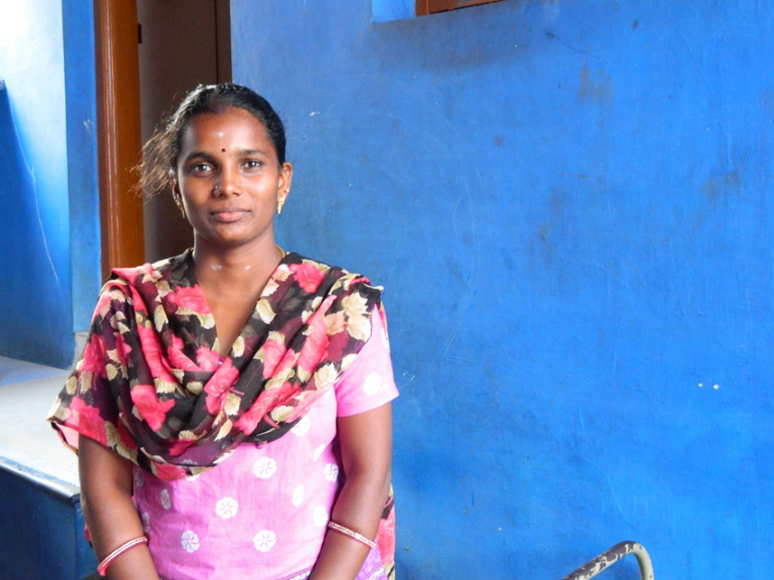
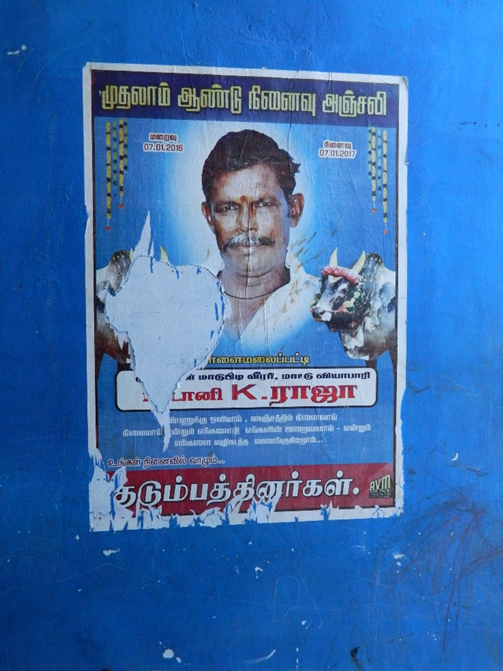
Therefore, it is clear from these accounts that the bull not only forms an integral part of their everyday life but has larger implications for their culture, families, beliefs, values and relations.
Note
[i] Audio transcription and translation from Tamil to English was done by Maharajan Thevar.
This article was originally published on Sahapedia, which offers encyclopedic content on India's vast and diverse heritage in multimedia format, authored by scholars and curated by experts — to creatively engage with culture and history to reveal connections for a wide public using digital media.

